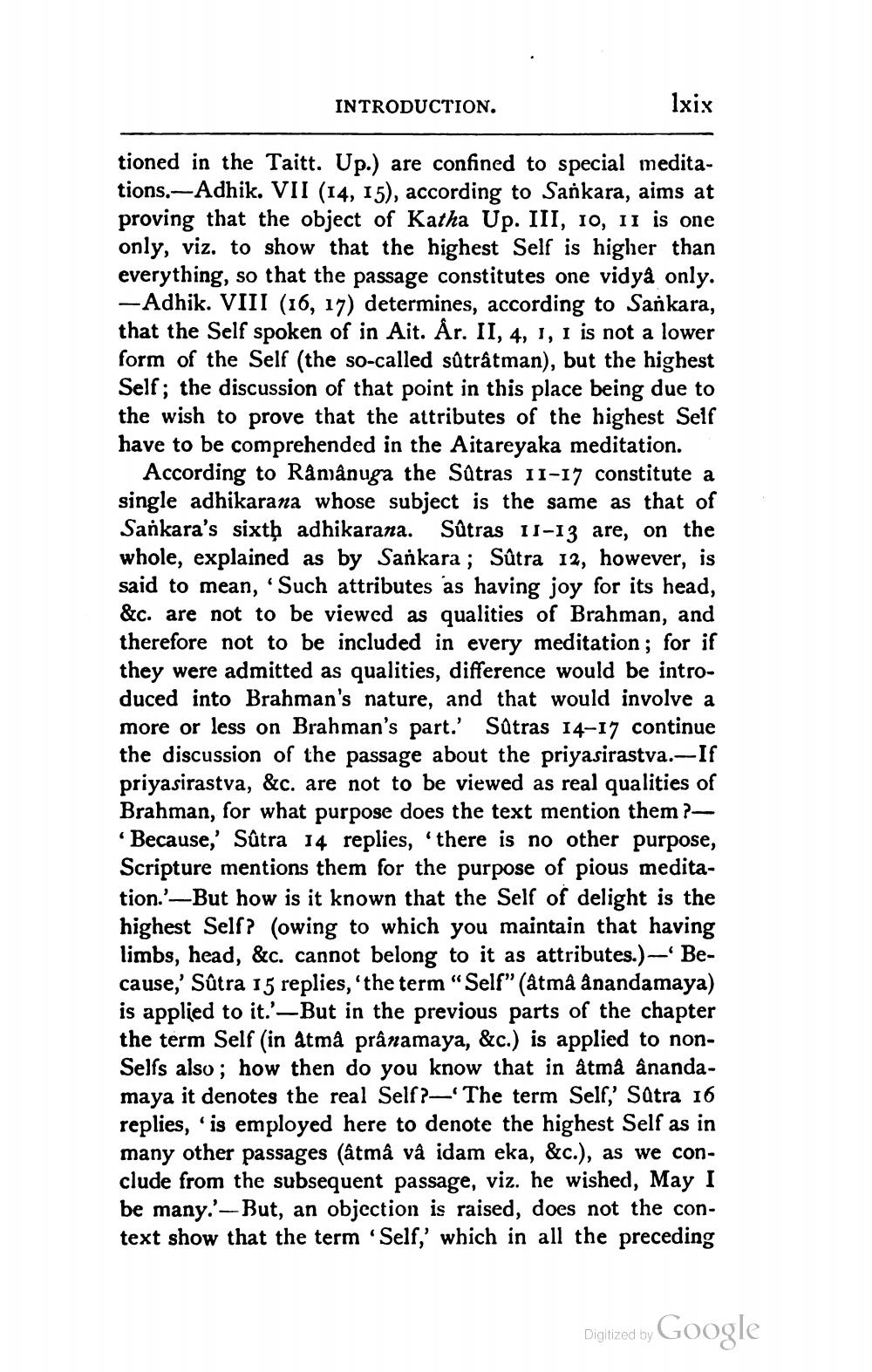________________
INTRODUCTION.
lxix
tioned in the Taitt. Up.) are confined to special meditations.-Adhik. VII (14, 15), according to Sankara, aims at proving that the object of Katha Up. III, 10, 11 is one only, viz. to show that the highest Self is higher than everything, so that the passage constitutes one vidyå only. -Adhik. VIII (16, 17) determines, according to Sankara, that the Self spoken of in Ait. År. II, 4, 1, 1 is not a lower form of the Self (the so-called sâtrâtman), but the highest Self; the discussion of that point in this place being due to the wish to prove that the attributes of the highest Self have to be comprehended in the Aitareyaka meditation.
According to Râmânuga the Satras 11-17 constitute a single adhikarana whose subject is the same as that of Sankara's sixth adhikarana. Sûtras 11-13 are, on the whole, explained as by Sankara ; Sûtra 12, however, is said to mean, 'Such attributes as having joy for its head, &c. are not to be viewed as qualities of Brahman, and therefore not to be included in every meditation ; for if they were admitted as qualities, difference would be introduced into Brahman's nature, and that would involve a more or less on Brahman's part. Sûtras 14-17 continue the discussion of the passage about the priyasirastva.- If priyasirastva, &c. are not to be viewed as real qualities of Brahman, for what purpose does the text mention them? *Because,' Sûtra 14 replies, there is no other purpose, Scripture mentions them for the purpose of pious meditation.'-But how is it known that the Self of delight is the highest Self? (owing to which you maintain that having limbs, head, &c. cannot belong to it as attributes.) — Because,' Sûtra 15 replies, the term "Self” (âtma anandamaya) is applied to it.' —But in the previous parts of the chapter the term Self (in atma prânamaya, &c.) is applied to nonSelfs also ; how then do you know that in åtmå ânandamaya it denotes the real Self?— The term Self,' Satra 16 replies, 'is employed here to denote the highest Self as in many other passages (åtmâ vâ idam eka, &c.), as we conclude from the subsequent passage, viz. he wished, May I be many.' - But, an objection is raised, does not the context show that the term 'Self,' which in all the preceding
Digitized by Google
Digitized by




